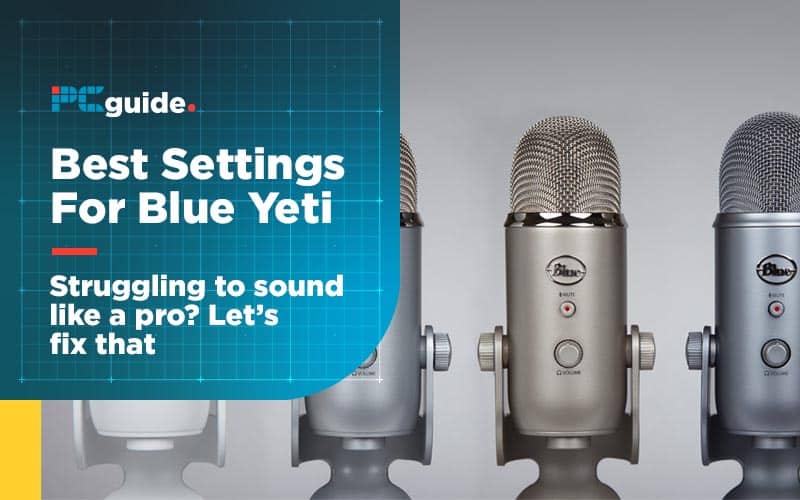Best Blue Yeti Settings For Streaming
Reviewed By: Kevin Pocock

Table of Contents
When looking to improve the quality and content of your Twitch streams, a good piece of recording equipment can go a long way. Some popular streamers and playthrough recorders will use a wide range of professional tools, from Snowball to Blue Yeti and more. While having the best set of recording equipment isn’t a necessity, it can help to greatly improve the sound of your voice when communicating with an audience.
That’s where Blue Yeti comes in.

If you go to any electronics retailer, they will likely greet you with enthusiasm when the Blue Yeti brand is mentioned. This is one of the big guns in modern microphone technology; it is used by Markiplier, PewDiePie, and some of the most famous streamers in the world. It’s a reliable microphone that is used by the pros, but won’t cost you an arm and a leg. Once you’ve acquired the microphone, however, you may need mess around with it a bit.
Since the Blue Yeti microphone can be used in a wide variety of ways, it may need some special attention when you try tuning it for streaming. There are a few settings and tweaks that can grant you the best performance when playing games live.
In order to prevent any keyboard feedback or loud mouse clicking coming through to the microphone, you can adjust your Blue Yeti settings accordingly.
Drop that Gain Down Low
One of the biggest pros of the Blue Yeti can also be one of its biggest cons, depending on how it best suits your needs. The gain on the Blue Yeti is so sensitive that it will pick up almost any sound, including ambient background noises, and project them loudly through your recorder.
You don’t want that!
Try dropping the gain down as low as it will go. While it may seem counterproductive to reach the absolute minimum with your gain, it will benefit you by preventing the accidental pickup of keyboard typing, mouse clicks, chair squeaks, and more.
This is especially true if you have a mechanical keyboard!
Adjust Your Windows Volume
You may want to check on your Windows volume when using the Blue Yeti. Various streamers have reported separate audio results, depending on the volume level.
If your gain is down all the way, try setting your Windows volume to 100. This will help your mic regain some of it sensitivity without creating that extra buzz or picking up on noises that aren’t your voice.
If that balance approach does not work for you, you can try raising your gain to a middle-point, and lowering your Windows volume to 0. For some streamers, this technique helps them to achieve the perfect level of volume and sensitivity. For others, it’s better to have 0 gain and 100 Windows volume to prevent any ambient sounds from getting through.
All in all, you’ll want to adjust your Blue Yeti gain slowly to see what works best for you. Use an external noise gate to help buffer some of the outside sounds. Keep the mic close to your mouth when you speak, and fairly close to your computer as well. With the right amount of adjustment, you should be able to achieve an audio quality that lets your voice ring through loud and clear while keeping background noises at bay.
About the Author
Andrew is one of three co-founders of BGFG, the parent company of PC Guide. A keen gamer and PC enthusiast, Andrew dabbles in a bit of writing sometimes - when he gets the chance to!

